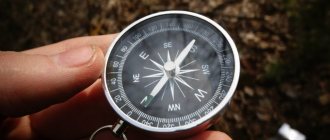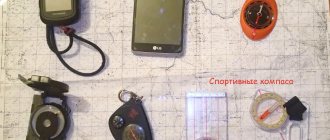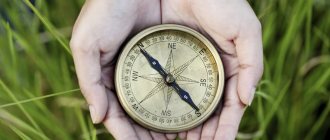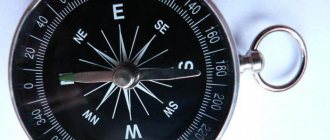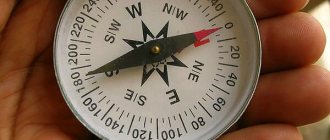Having found the constellation Ursa Major in the night sky, or by paying attention to the pattern of snow melting, an experienced traveler can easily determine the sides of the horizon. However, it is better for a novice tourist to abandon “amateur activities” and, postponing alternative methods of orienteering until better times, control the route using a compass.
It happens that, after glancing at the types of compasses presented, a beginner becomes confused and cannot choose the device for its intended purpose. But it’s stupid to acquire a gyroscopic device when going on a “quiet” hunt in a nearby forest or a one-day hike. In order not to regret a rash purchase, you need to study existing models and only then go shopping.
How to choose a compass
You can avoid trouble by having with you an ordinary compass, which acts as a guide and accurately determines north and south. However, this does not mean at all that the same device is suitable for wandering along forest paths and for a multi-day expedition. But more on that later. First, check out the criteria for the right compass:
- Durable, or better yet, shock-resistant housing made of metal or plastic.
- Protected from moisture.
- A principle accessible to everyone for determining the directions of the sides of the horizon: North, South, East, West.
- Dial with clearly visible divisions.
- The presence of large letters indicating directions.
- Compact and mobile.
- The electronic model must have a powerful battery. But don't waste time looking for a battery that lasts forever. As a rule, a fully charged battery runs out within three days.
What types of compasses are there?
Many modern devices operate on the principle of the oldest model, invented at the turn of the 12th – 13th centuries. Every year the compass is improved with structural changes. As a result, many devices appeared with one or another bias (geographical, children's, military, sports, etc.).
For a long time, magnetic or electronic types of compasses have remained undisputed favorites.
Varieties
The compass has been improved over the centuries, so now you can easily choose the ideal device depending on the purpose of its use. The difference between products is not only in the material of manufacture, size, shape or cost. All devices are capable of indicating the direction of the world, but some can calculate the angle of the terrain or determine the exact location.
By purpose
According to this criterion, compasses are divided into the following types:
- Tourist, they are also often called sports. The “northern” arrow is traditionally blue, although it can be distinguished not by color, but by the presence of a thickening at the tip. All marks are covered with a luminescent compound, which will allow you to see the indicator in the absence of lighting. A mandatory rule for using such devices is that they are held strictly horizontally in the hand.
- Geological. Additionally, you can use a compass to measure rock layers. There are circular degree markings and a clinometer for determining vertical degrees. They differ in the division scale directed counterclockwise.
- Military. Not much different from tourist ones. Additionally, they have a ruler, a magnifying lens and a more durable design - thickened glass and a metal body. The direction azimuth is determined more precisely.
- Astronomical. You can only work with the compass at night, since it determines the direction based on the stars and other celestial bodies, but the product’s accuracy is high.
The name "compass" in Old British meant "circle".
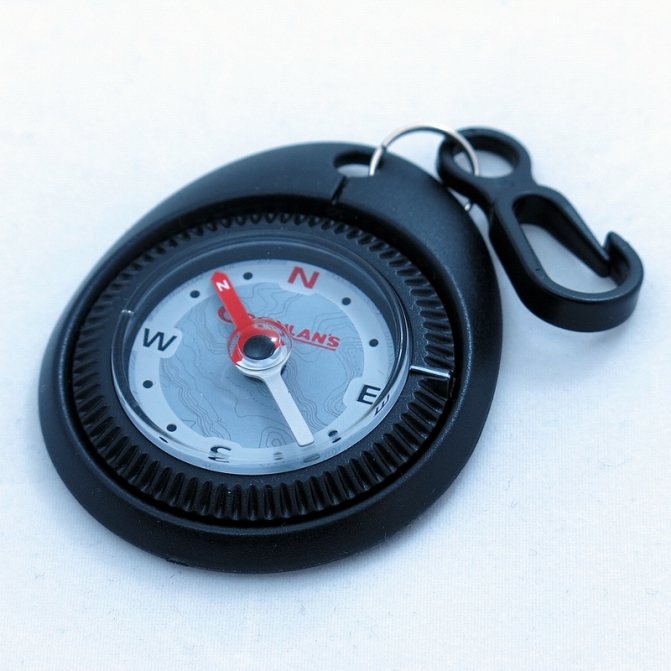
Tourist
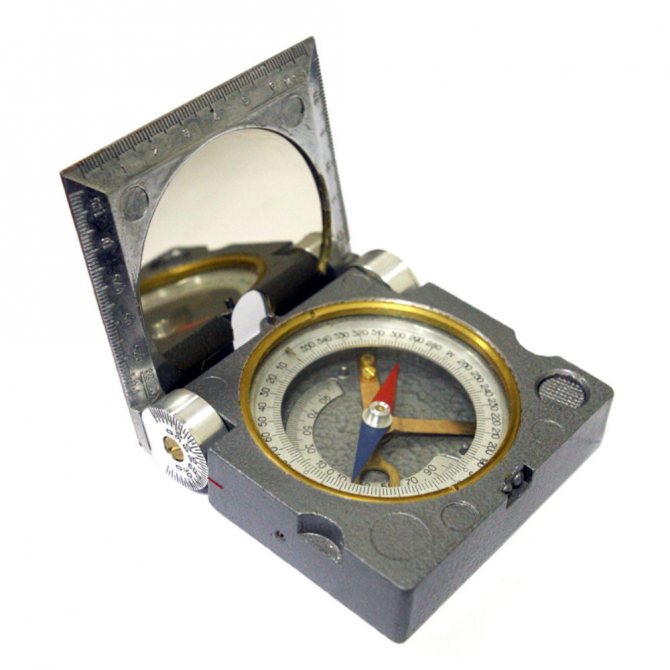
Geological
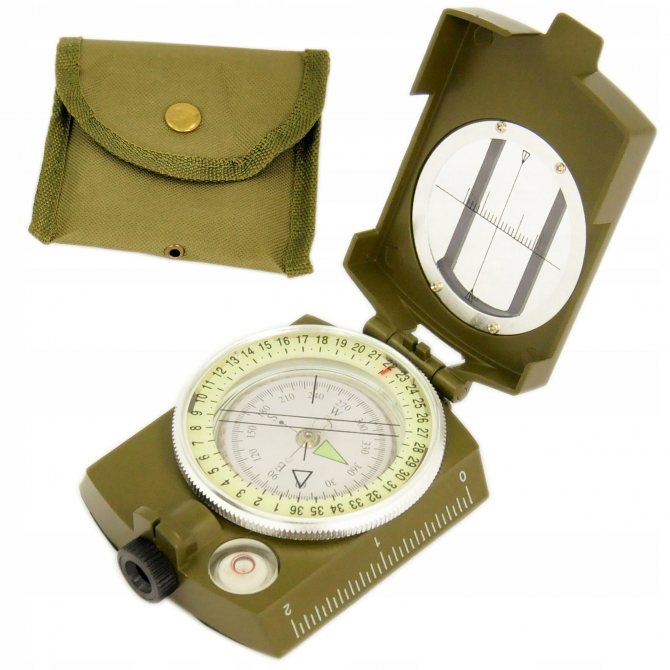
Military
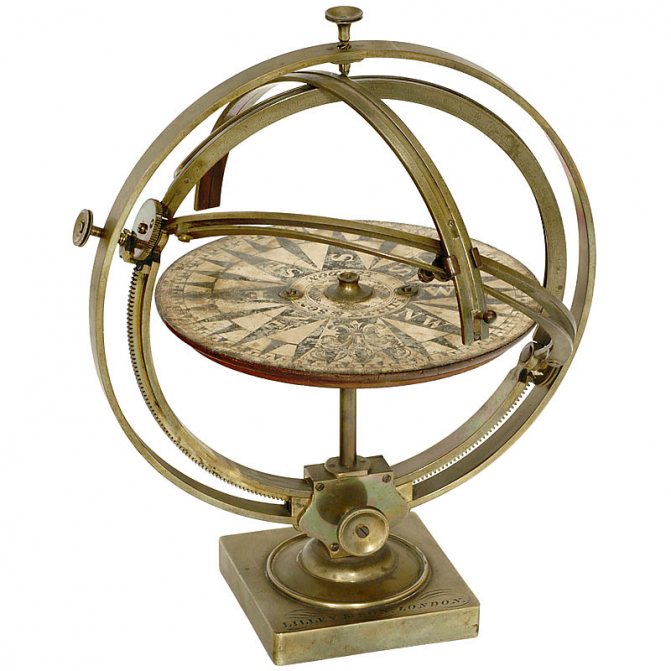
Astronomical
Type
If we take a closer look at the types of compasses depending on their design, we can distinguish three large groups: mechanical, electronic and satellite. The difference between them lies in convenience, technical characteristics and reliability. Interestingly, travel devices can be of any type.
A mechanical compass is the simplest model with an arrow pointing north and south. There is no modern display here and you need to work with the mechanism the old fashioned way. The arrow, by the way, can sometimes show inaccurate results. Nevertheless, a magnetic compass is reliable, inexpensive, and is most often taken on trips.
In an electronic compass, the needle is replaced by a sensor. It’s much easier to navigate, since the program will do everything on its own. An electronic compass can have many additional functions, but it is important to remember to have spare batteries with it.
It is important for users to master navigation using a satellite compass. This is the most feature-rich and unreliable type that can be downloaded to a smartphone. It will indicate the exact location and provide a map, but will leave the owner in a vulnerable position if the satellite signal is lost. This can happen in remote areas. If the forest is located near the city, this most likely will not happen. On the contrary, the device will relieve the traveler of the need to do calculations and consult the map.

Mechanical
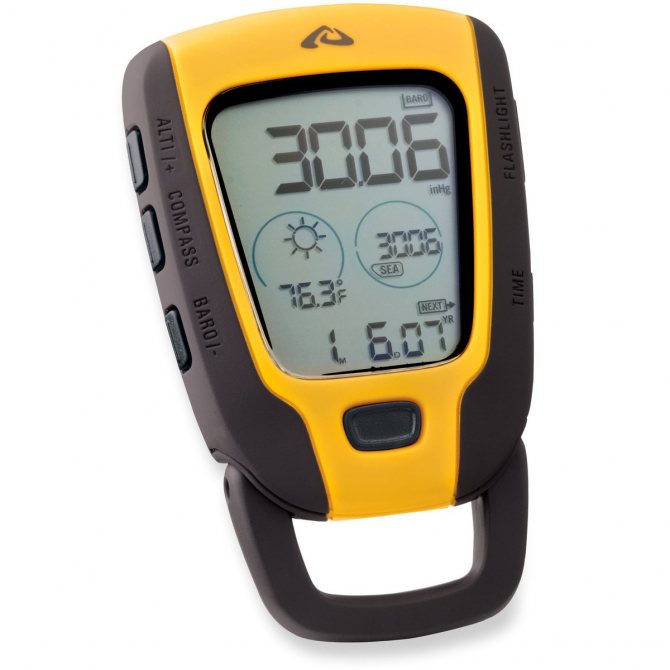
Electronic
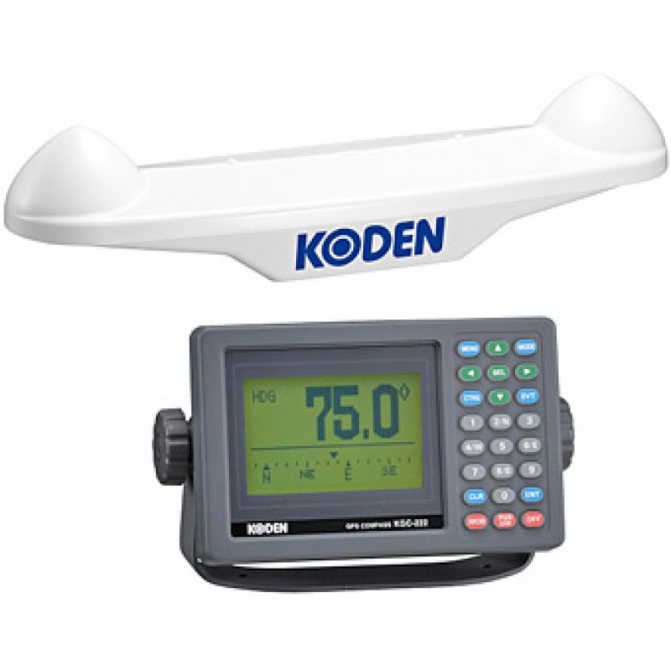
Satellite
Magnetic
A magnetic compass is simple and easy to use. The advantage of magnetic models is independence. Simply put, their functionality is independent of the battery charge level. By interacting directly with the earth's magnetic field, the built-in magnetic elements are activated.
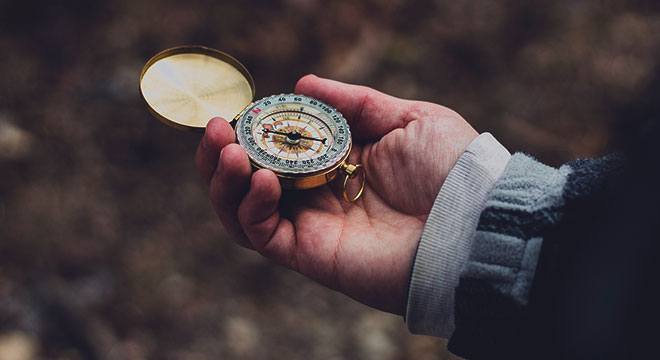
In a good compass, the capsule with the dial located inside is filled with a special solution that is resistant to temperature fluctuations. An air bubble in the liquid serves as an indicator of the orientation level. You should remember the factors that affect the accuracy of readings from a magnetic device:
- the presence of metal objects and structures;
- magnetic storms;
- an area with a high content of metal ore.
In order not to find yourself far from civilization with a demagnetized device, you need to conduct “reconnaissance.” Make sure that there are no metallic “obstacles” along the route. It is also important to take into account the phase of sun activity at the time of orientation. Now let's look at the main types of magnetic compasses.
Mechanical
The model is in particular demand among tourists. A magnetized metal needle with a red tip placed on a needle “looks” in the direction of the strongest magnetic field – north.
Using a mechanical device and a topographic map, you can determine the location of landmarks as accurately as possible.
For the military
It differs from the mechanical one by the presence of a magnifying lens, a ruler and a sighting device (front and rear sights), designed for better viewing of landmarks.
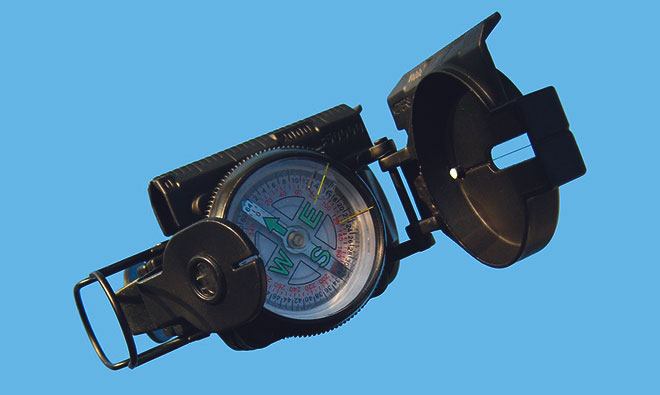
Tactical models are designed for precise orientation in field conditions. Main characteristics: metal body, high precision.
Electronic compasses
Modern compasses, operating on the basis of magnetized sensors, are distinguished by high accuracy and a variety of functions. In addition to accurately determining coordinates (using satellite systems), it can “remember” data on the length of the route and the path it takes.

It is especially convenient to save the selected point on the terrain where, say, a camp is set up, and continue on your way. Both outdoor enthusiasts and professionals: military personnel, representatives of law enforcement agencies remain permanent consumers of electronic compasses.
Attention! When choosing an electronic device, you should keep in mind that the battery is discharged within 3 days. Therefore, when going on a long walking expedition, it is better to acquire a magnetic compass.
Now let's look at the main types of electronic compasses.
Radio compass (ARC)
An automatic on-board radio direction finder, used for navigation of aircraft during flight. Indicates the direction of an object emitting radio waves. Having tuned to the carrier frequency, the device automatically displays the necessary data. Regardless of weather conditions and time of day, it copes with the following tasks:
- ensures the correct course to follow;
- determines where the radio station is located;
- performs the functions of a backup radio receiver.
Travel electronic compass
The best hiking option, showing accurate time and performing a lot of additional tasks. But only for a short tourist walk. It does not have a magnetized needle, which makes it different from its magnetic “colleague”. Determines the sides of the horizon using electronic circuits.
GPS and Glonass
Satellites transmit signals that are picked up by an electronic system. Navigators recognize information and accurately determine the required coordinates.
Unlike magnetic ones, they can estimate real coordinates in conditions of poor visibility and without noticeable landmarks. When avoiding an obstacle with GPS device, you just need to adjust it along the changed route line and the desired direction will be set.
Can a GPS receiver replace a compass?
GPS receiver has high navigation characteristics and often has a built-in electronic device. However, despite all its functionality, the navigator becomes useless if the battery is dead.
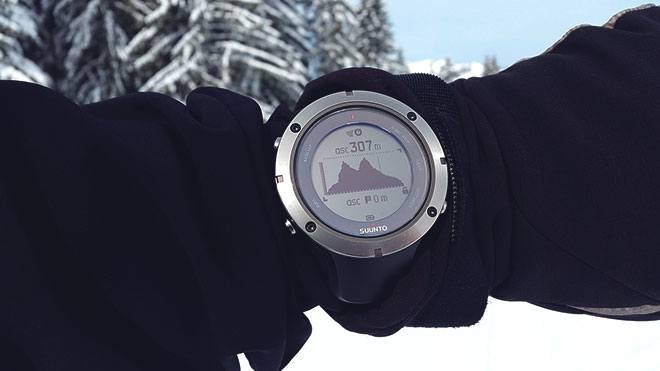
The conclusion suggests itself: when going on an expedition or hike, it is better to take a trouble-free magnetic compass with you. But you can also grab a set of backup batteries. However, during a long walking expedition, this measure will not solve the problem.
How to determine cardinal directions
The compass mechanism is simple and ingenious - a magnetized needle, placed in a case under transparent glass in the center of the dial (dial), when released from the stopper, will show the north pole with its north tail, and the south pole, respectively, with its south tail. The limb is marked with the cardinal directions using letters. If the device is domestic, then the letters will be taken from the Russian alphabet, but if the device was not made in our country, then in accordance with international designations, Latin.
The dial has a circular scale of 360 degrees, which is divided into 4 identical sectors, increasing clockwise. The size of the scale step for an individual device may be different, however, in any case, any of the directions of light is delineated by certain degrees:
- north is marked 0 degrees,
- south - 180 degrees,
- east - 90 degrees,
- west - 270 degrees.
This is interesting: Determining a place for bivouac
Determining the cardinal directions using the device is quite simple , but in order for the mechanism to indicate the correct direction, a number of simple rules must be followed.
The device must be given an exact horizontal position - for this it is either placed on a flat surface or held with an open palm slightly below chest level.
There should be no magnetic interference nearby, such as:
- accumulations of metal,
- railway track,
- power lines,
- as well as other similar interference.
If these requirements are not met, the arrow will show the wrong direction.
As soon as the compass is in the correct position, you will need to release the lock , which plays the role of a brake or stopper.
The released arrow, having wavered, will take a firm position when the specially marked northern tip indicates north, and the opposite one indicates south.
After this, you need to align the tips of the arrow with the cardinal directions marked on the dial.
In order to determine a route on the ground, it is necessary to correctly select the desired direction of the path, corresponding to the desired part of the map or outline.
Electromagnetic
A device with straps for wearing on the hand is difficult to classify as a frequently purchased device. The device is made as a magnetic device, but with one significant difference: the measurement of the position of the arrow is carried out by electronic components. Then, the converted data appears on the screen.
The electromagnetic model is good for mushroom picking, fishing or hunting. It is enough to put the device on your hand and monitor the screen indicators.
Attention! Since the functionality of the device depends on the battery charge, it is not suitable for long hikes.
Liquid
The configuration is the same as the classic magnetic version. This is a sealed, sealed flask with an arrow, filled with a non-freezing solution. Thanks to the anti-freeze resistance, the needle calms down in just a couple of seconds.
The indicator practically does not respond to vibration and other influences. There is no need to buy a liquid device for a walk along park alleys. Its main purpose is orienteering competitions. Easy to use, precise and fast, it saves every second. But this is the most valuable thing on the path to victory.
Navigation using map and compass.
The map and compass allow you to take four basic measurements:
- determine directions;
- follow directions;
- measure directions on a map;
- plan directions on the map.
After all, there is no substitute for practice if your goal is to improve your navigation skills. Here are some additional steps you can take to learn how to navigate with a compass:
- Attend a wilderness orienteering workshop or course.
- Study a navigation book and apply its principles during day hikes, short trips, even those on city streets.
- Travel with friends who have experience in navigation and remember everything you can.
- Look, perhaps there is an orienteering club not far from you. Orienteering is very popular in Scandinavian countries, add a sporting element to map and compass orienteering.
- Endurance races, treasure hunts, psychological puzzles, and orienteering events are often organized by regional clubs.
The compass remains an essential tool for safe travel in the wilderness. Learn to work better with a map and improve your compass skills. This will make you a more confident wilderness hiker.
Varieties of executions
When wondering which of the proposed compasses is better, don’t even expect to get an instant answer. And there is no need to hastily accuse the seller of incompetence. He can't read minds. First, decide under what conditions the device will be used and set a price barrier.
Attention! Don't buy a device based solely on its design. It is important to pay attention to its design features.
For example, tiny, weightless children's compasses are not highly accurate. It is unlikely that such a model will be suitable for conquering a new route far from civilization.
When is a compass better than a navigator?
Progress has provided us with all kinds of navigators that, via satellite, accurately determine their location and instantly plot the optimal route. However, they have a serious drawback, which can be fatal during a long stay in nature: they all need periodic recharging. The reliability of the compass is based on its simplicity. It consists of a circular scale (dial) and a magnetic needle with two ends, one of which (usually colored blue) points to the magnetic north pole. Compared to electronic devices, the compass has a number of advantages:
- does not require nutrition;
- works in any weather;
- does not get knocked down when dropped;
- not afraid of water;
- weighs very little;
- takes up minimal space.
The only thing that can affect its operation is the presence of a large amount of iron and live wires nearby: iron ore deposits, railways, high-voltage power lines.
This is interesting: How to protect yourself from a household gas explosion: simple rules and tips
Attention! You should not store the compass next to things such as an axe, saw, knife, batteries, or other compasses: it will demagnetize.
What to look for when choosing?
It is not enough to know what types of compasses there are. The main thing is to be able to identify a truly suitable device. Tips from experienced travelers will help you figure it out:
- A classic device with a ruler and degree division is suitable for hiking. Using a degree dial and a ruler, experienced tourists make degree and azimuth calculations.
- GPS navigator - an option for a cyclist. Attention! It requires regular recharging, which means that when going on a bike tour you need to take a backup, classic compass with you.
Electronic navigators are suitable for aviators. Multifunctional devices will allow you to monitor altitude and pressure indicators.
How to choose a convenient model
How to choose a compass that lasts forever? Similar questions are asked by people who have recently embarked on the path of tourism. Experienced travelers do not rely on "maybe". Before setting out on a route, they think through all the actions that may arise in force majeure situations.
For example, a car moving through snowy expanses broke down, and the battery of an electronic device was hopelessly discharged. If you find yourself in such a situation and have no experience in alternative methods of orientation, you can get completely and irrevocably lost.
But the trouble will seem trivial if you have a spare emergency kit at hand, consisting of detailed maps of the area and a magnetic compass that does not depend on energy sources.
Cars and motorcycles
To make a motorcycle rally or a car trip to new places, you can pay attention to an electronic device. This ensures the most accurate data possible. At the same time, the compass will not react to metal parts of the vehicle. This means that its functionality will not decrease.
How to navigate
The first question that people ask when they receive a compass is how to hold it correctly? Everything is simple here: the standard magnetic model should lie flat in the palm of your hand. Walking is allowed; you can avoid hesitation by pressing your hand to your chest.
The effect of metal on the mechanism must not be forgotten. If there are power lines or a railroad nearby, the needle of even a working device may deviate.
It must be remembered that even a simple model can be faulty. Any instructions and rules of use begin with a recommendation to check the device before use. To do this, you need to place its body on a flat horizontal surface, wait until the arrow turns north, and bring a metal object. The principle of operation of the mechanism is based on magnetic fields, so the arrow will definitely deviate. This is fine. However, if the device is working correctly, the pointer will return to its original position as soon as the metal object disappears.
Using a compass and map in the forest
To determine your location in the forest you will have to use both a compass and a map. This is a little more complicated, so it's easier to use GPS on your phone. If there is no alternative, then there are several steps to compare the drawing with the real terrain:
- place the map parallel to the northern end of the arrow;
- visually find a landmark on the horizon;
- calculate the exact location based on three visible points.
North on the map and compass must match. Moreover, its position should not shift throughout the entire journey, until the moment the traveler is in place.
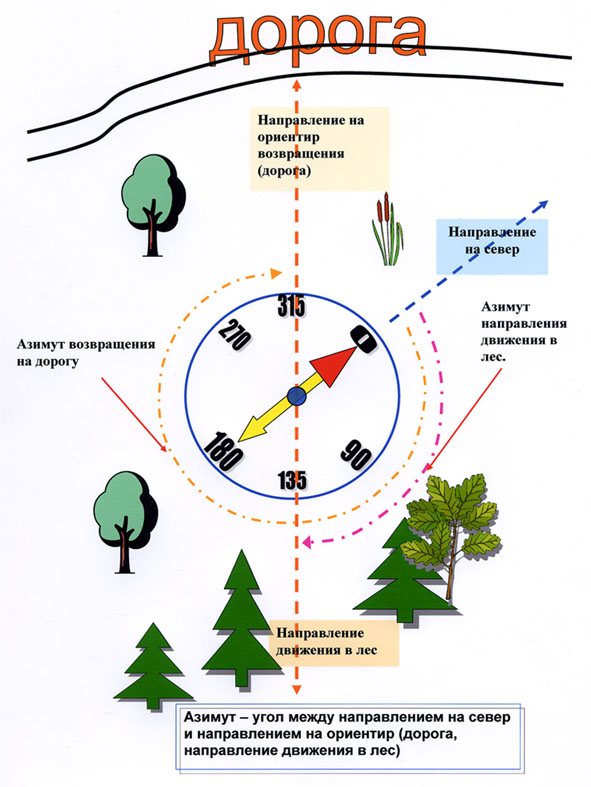
Use without a card
Before a real trip, you should practice finding the cardinal directions in your apartment. This will almost completely solve the problem of how to use a compass in the forest without a map. If necessary, it is worth watching introductory videos.
To get out of the forest using a compass, it is better to choose something extended as a landmark: a river, a road, a horizon line. Using the device on the ground is more difficult than at home, especially without a map: obstacles on the way will force you to adjust the trajectory and deviate from the course. An inexperienced traveler risks getting lost. If you couldn’t return to your starting point even in your apartment, but you want to go on a trip now, it’s better to use a compass in your smartphone, which will not only calculate the azimuth, but also indicate the exact direction.

In the apartment
To understand how a compass works, you can practice orienteering without leaving your home. The principle of operation of the mechanism here is the same as in open areas or in the forest. The steps will be as follows:
- Selecting a landmark. Any stationary object, such as a closet or chair, will do. You need to face him. This is the starting point: here is both the beginning of the “journey” and its end.
- The compass must be turned slowly until the arrow points exactly north.
- You need to take a few steps in this direction in a straight line.
- Count the degrees clockwise from zero to the number at which the pointer is frozen. The number must be remembered or written down.
- The second number is on the opposite side from the first, that is, if 315 was rolled first, then on the other side there will be 135 (azimuth).
- Head towards the second determined direction. It will be the middle line of the two previously marked points.
A navigator is a useful device that makes a traveler’s life much easier. A compass is easy to determine direction, but cannot be relied upon completely. Emergencies such as loss, battery failure, breakdown, and so on are always possible. A map and compass will not take up much space in your hiking backpack, but will help you quickly find the right path.
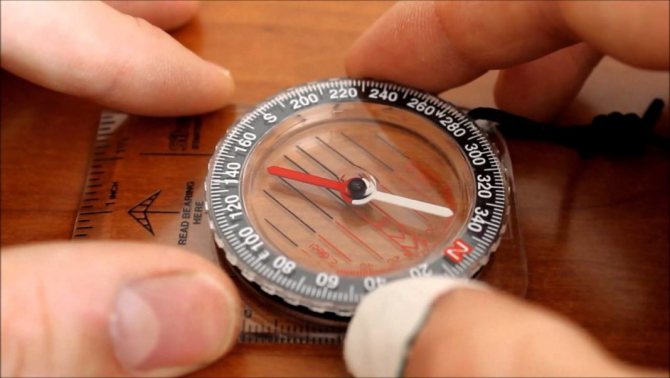
Recommendations for proper use
Like other navigation devices, the compass may be defective. Therefore, without leaving the counter, you need to make sure that the device is working properly. First, rotate and shake the body thoroughly. Then pay attention to the speed at which the needle returns. If the search for North and South takes too long, the device is no longer suitable.
It is not enough to know what types of compasses there are. It is much more important to choose the right model and master the science of orienteering.
Before you go on a hike, you need to study the attached instructions from cover to cover. Further actions:
- calibrate;
- practice determining your coordinates on familiar terrain;
- if we are talking about an electronic model, take care of spare batteries.
When considering an electronic device, you need to pay attention to the type of screen. The touch display absorbs more energy, which is important to take into account when planning a route and determining the duration of the trip.
Important information! When a magnetic model is used for a long time, some of its parts become deformed. The possibility of erroneous readings can be eliminated by regularly checking the operation of the device.
Can a GPS receiver replace a compass?
The compass and Global Positioning System satellite receiver are complementary tools. The compass has a feature that a GPS device does not - it can show the directions of magnetic north. Higher quality GPS receivers almost always come with an electronic compass. However, GPS receivers are still powered by a battery, which can run out at any time. A compass that relies solely on the magnetic forces of the earth does not have this disadvantage. So, even if you choose a GPS device as your primary means of navigation, you still need to purchase a compass.
GPS receivers are great devices. They are designed to estimate the direction of movement by calculating the difference between your current position and your destination. They can also tell you your current location without relying on visible landmarks that a compass requires. This is a big advantage on snowy or foggy days.
A GPS receiver has another advantage over a compass. If you are following a compass and deviate from your route to avoid obstacles, you will need to carefully monitor your movement. This is necessary to determine the path you had to take when avoiding the obstacle. Once past an obstacle, you may need to adjust your compass heading, but key landmarks may no longer be visible. With a GPS device, you can easily get the desired direction and re-adjust the compass to match the changed route line.
In conclusion, GPS and compass are both good devices that inform you about your movements in different ways. When you want to know which part of the world you are facing, the compass plays the main role here. Read the article on how to choose a GPS navigator.
Devices worthy of attention
Modern compasses do most of the work themselves. The traveler just has to follow the instructions exactly. Among the many existing models, the leaders are:
CAMMENGA MODEL 27CS OLIVE DRAB LENSATIC
Ultra-precise and reliable device. Withstands any temperature and climatic anomalies. “Unkillable” titanium case, coated with phosphor paint.
At night, just shine it on it for 30 seconds and use it.
POCKET TRANSIT 0-З60 DEGREE
“Clad” in a cast aluminum housing, the device is resistant to mechanical stress and temperature fluctuations. The silicon lock reliably protects against moisture.
This allows you to use the device when crossing water bodies. The needle moves smoothly and is quickly installed on the magnetic server.
Top best compasses for forests and tourism
When choosing a compass for use in the forest, you should pay attention not only to the characteristics of a particular model, but also to the features of working with it. When choosing, you should consider the advantages and disadvantages.
The rating of compasses for tourism and forests includes the best models as assessed by experts and consumers.
SILVA LENSATIC Z60
Advantages: Accurate, rugged, durable and reliable version of the liquid-damped lens unit. Silva's Lensatic 360 features a classic design traditionally used by military units to obtain accurate data.
Attention! In zone 5 of the deep south (Australia), the resulting angle of incidence of the dial may ground it to the bottom of the capsule, indicating an error, so the Silva is recommended to be selected for zone 1 applications.
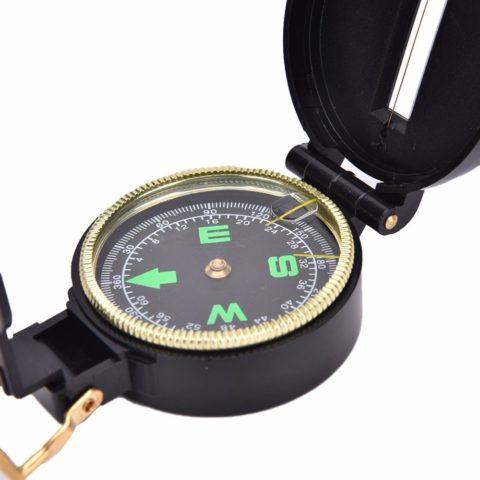
It works flawlessly in both hot and cold weather conditions. To reduce potential damage from extreme temperatures, always carry in an inside pocket.
CAMMENGA MODEL 27CS OLIVE DRAB LENSATIC
If you need to choose a military compass, this model is recommended. This is a genuine original American military device with tritium illumination. This device is also recommended to be chosen when hiking in extreme conditions. Withstands rain and snow. Prevents moisture from penetrating into the housing.
Conveniently store in your purse. There is a ruler and a magnifying glass. Tritium backlighting of the dial allows use in the dark. The case is shock-resistant and dust-proof.
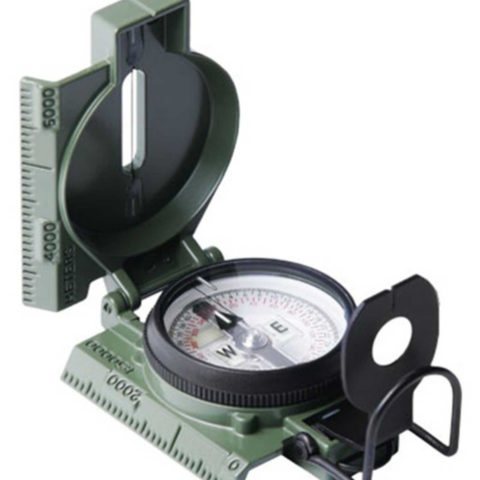
Expensive, tested in combat conditions
SUUNTO M-ЗG GLOBAL
Originally from Suunto's M series, the M-3G is a compact, high-quality precision compass designed for accurate and easy direction finding. Features a large, liquid-filled capsule and an adjustable angle correction scale, which guarantees a high level of accuracy.
Another feature is the serrated bezel ring, which turns easily even in cold conditions when wearing gloves. And with easy-to-read luminous markings and magnifying lenses, the M-3G is ideal for navigating in low-visibility conditions.
Important! Features a base plate with anti-slip rubber pads for stability and rounded edges for a comfortable grip.
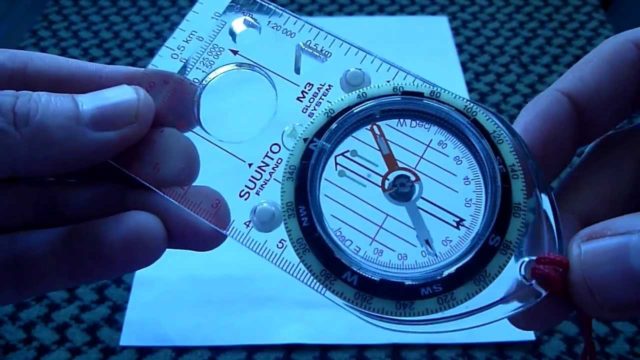
Previously, most compasses only functioned well in one of five geographic zones. This is because they were balanced differently depending on the tilt, i.e. the vertical intensity and direction of the Earth's magnetic field. It is recommended to choose this device because it works anywhere in the world.
SUUNTO M-9
Choosing a compass for hiking in the forest is a responsible matter. You need to choose a device that suits the user's needs. Among magnetic ones, it is recommended to choose SUUNTO M-9. It is characterized by the manufacturer as a durable and reliable navigation device both on rough terrain and in urban conditions.
Indication type: pointer. Worn on the hand. There is a backlight for easy navigation in the forest at night.

Does not belong to the professional product line
If you don't take into account the strap, SUUNTO M-9 is really high quality and functional. It allows you to work with the map more efficiently. Appearance is rated 5, quality 4, functionality 4 and convenience 3.
Brunton International Pocket Transit 0-360 Degree
Great for camping. It is better to buy this compass for orienteering in the forest while hiking through mountains, rivers and other obstacles. It is a precision pocket device with powerful Alnico V magnets and a polished sapphire bearing. Azimuth and vertical angle +/- 90% of readings accurate to +/- 1/2°.
This device is the best choice; you can move with it in the rain because it is waterproof. This compass is an exceptional Brunton product. It is recommended for engineers to choose, it has a built-in clinometer.
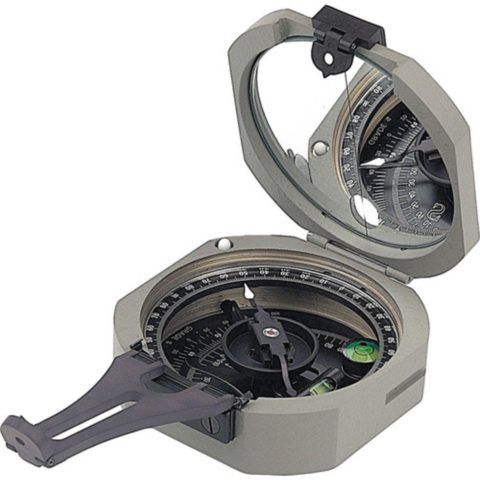
It has a durable, waterproof die-cast aluminum body
SUUNTO MB-6 GLOBAL
A multifunctional device the size of a matchbox. This device is recommended for those who love compact gadgets. This is the best travel compass. If you choose this model, you don’t need to open your backpack and check the route every time. Despite its small size, it includes navigation aids at high altitudes. It is recommended to choose it for climbers and trekking enthusiasts.
Attention! Climbers are recommended to choose this model because it has a durable design and a sighting device for accurately determining the direction.
The device is a mirror device, optimized for the northern hemisphere. It is a combination of a bearing and a tablet compass. Once you select the device, you can use it in dark conditions. There is a luminous marking.
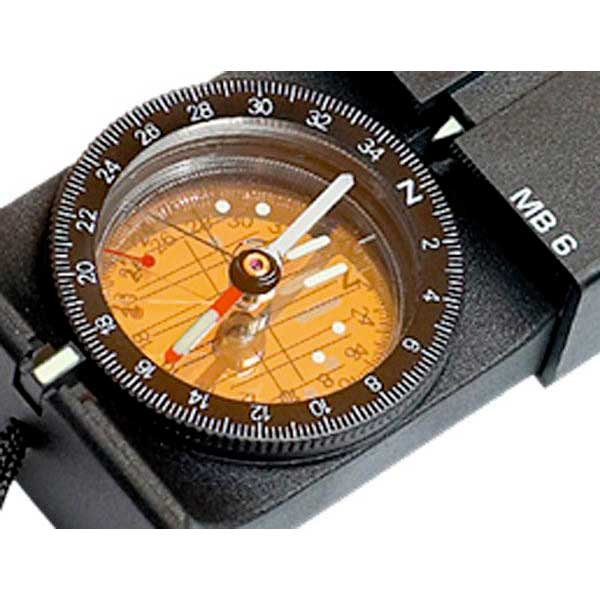
The forest survival product is made in Finland. Weighs 57 g.
SILVA RACE 360 Jet
A good compass for a tourist with a movable capsule. The model is purchased by professional orienteers who need a high-quality device with minimal game stabilization time.
The needle is transparent, which allows you to read the card more accurately. The needle does not move while running or cycling.
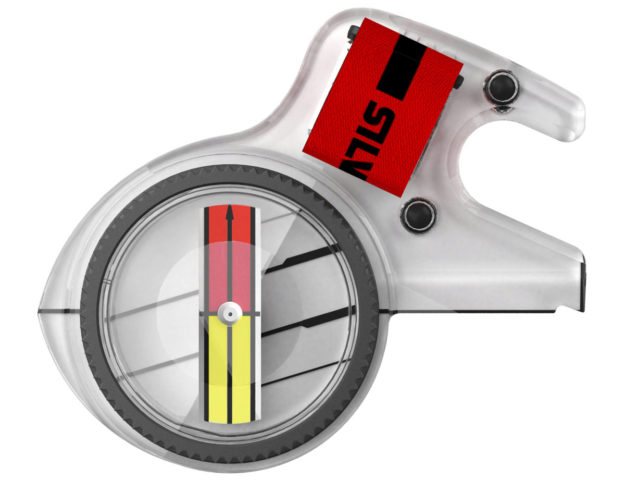
Country of origin: Sweden
The baseplate material can withstand even the harshest operating conditions. This compass is ideal for outdoor activities in the forest or adventure racing. Suitable for all users who need instant arrow installation.

